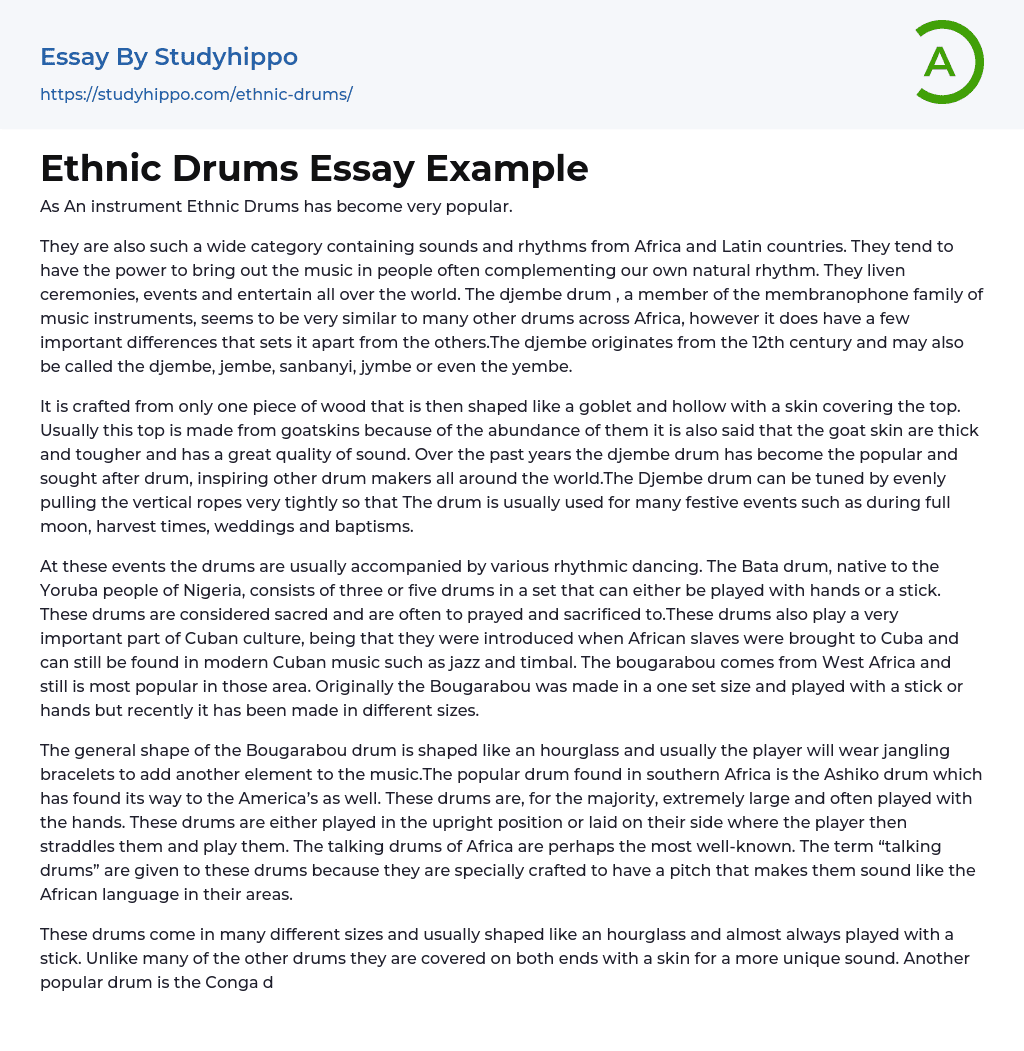Over time, the popularity of using ethnic drums as a musical instrument has grown.
The djembe drum has a rich history dating back to the 12th century and is known by various names such as jembe, sanbanyi, jymbe or yembe. It belongs to the membranophone family and stands out from other African drums due to its unique characteristics. Drums, which have their roots in Africa and Latin countries, are multifaceted instruments capable of producing an array of sounds and rhythms. With their innate ability to tap into people's sense of rhythm, they have become popular choices for ceremonies and events worldwide.
As time has passed, the djembe drum, which has a sought-after status and is widely known, has gained in popularity. It is fashioned from one piece of wood that takes on the shape of a goblet, with goatskin cover
...ing its top for superior sound quality as well as an abundance of material. By adjusting the vertical ropes, it can be tuned to suit celebratory occasions like full moon celebrations, weddings, baptisms, and harvest times.
Rhythmic dancing usually accompanies the drums at these events. The Bata drum, originally from the Yoruba people of Nigeria, comprises three or five drums in a set that can be played with either hands or stick and is considered sacred as well as being prayed and sacrificed to. Cuban culture also heavily features these drums, which were introduced during the time when African slaves were brought to Cuba and still feature in modern Cuban music, including jazz and timbal. Meanwhile, the bougarabou drum hails from West Africa and remains most popular in that area. While initially made in one size an
played with either hands or stick, it has recently been produced in different sizes.
The Bougarabou drum takes on an hourglass shape and is often accompanied by jangling bracelets worn by the player to enhance the rhythm. The well-known Ashiko drum, originating from southern Africa, has also gained popularity in the Americas. Typically, these drums are large and played by hand either in an upright position or while straddled on their side. One of the most renowned drums in Africa are the talking drums, which are named for their distinctive pitch that mimics the local African dialects.
Various sizes of hourglass-shaped drums are available, typically played with a stick and covered at both ends with skin for a distinct sound. The Conga drum, named after its African origin in the Congolaise, is also popular. It has evolved from a wood frame with rawhide heads to modern fiberglass with plastic heads.
Previously, the drum heads were attached to the drum using nails. However, they are now attached through tuning lugs that allow for adjusting the tension. Additionally, there are three different head sizes available: Quinto, Conga, and Tumbadora or Tumba. The Quinto, which is the highest-pitched conga, is commonly used by soloists and is referred to as "the singer of the band." It is used to create accents such as singing, laughing, and crying. The Conga, which falls in the mid-range, is used to play three-part rhythms.
The drum referred to as Segunda is the most autonomous of the three drums and is occasionally known as such. The Tumba, also called Salidor, is responsible for playing low rhythms due to its deep pitch. In the initial stages
of Conga's popularity, players would specialize in a particular drum and perform in groups, but as its popularity grew, simultaneous playing of two or three drums became more common.
The Fulla djembe is a unique drum crafted from wood and antelope skin, rather than the more common goat or cow skin, originating from Guinea. A distinctive aspect of this drum in its region is that it can be tuned using water. African music is frequently characterized as the heartbeat of existence.
The influence of African drumming can be observed in various music styles such as blues, jazz, pop and gospel. This is attributed to the distinctive rhythms generated by African drums and other instruments. Latin drums are part of Ethnic Drums which were derived from African and Moorish cultures during the era of slave trade. These drums served purposes such as communication, entertainment, signaling and recreation. The rhythmic patterns from Moorish and African music spread across the Caribbean during the 18th to 19th century and continue to be a significant component in contemporary Latin music.
The simplicity in structure of some of the oldest musical instruments, such as drums, could be the reason for its worldwide presence and widespread recognition in Europe, Northern America, and Western music. Some varieties of drums are the bongo, a small drum, and the Cajun for a snare effect. These drums can be played using hand or brushes and are generally located on the floor during play.
Drummers add to their drum kits with additional instruments like cowbells and maracas for added emphasis.




